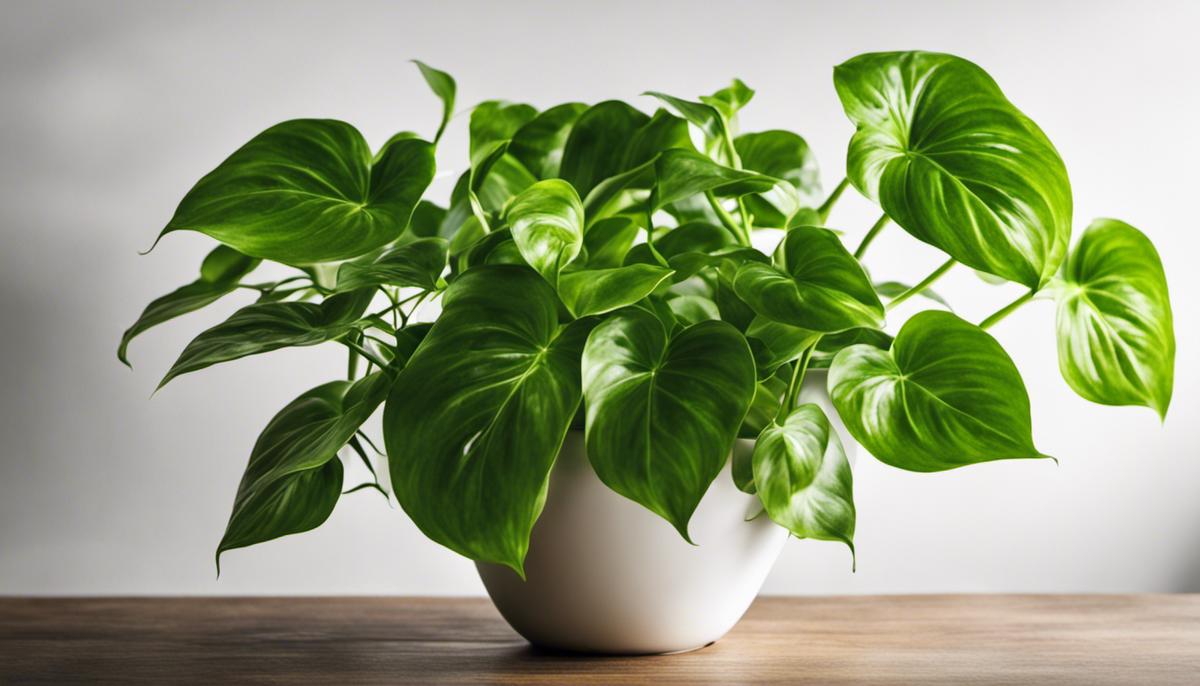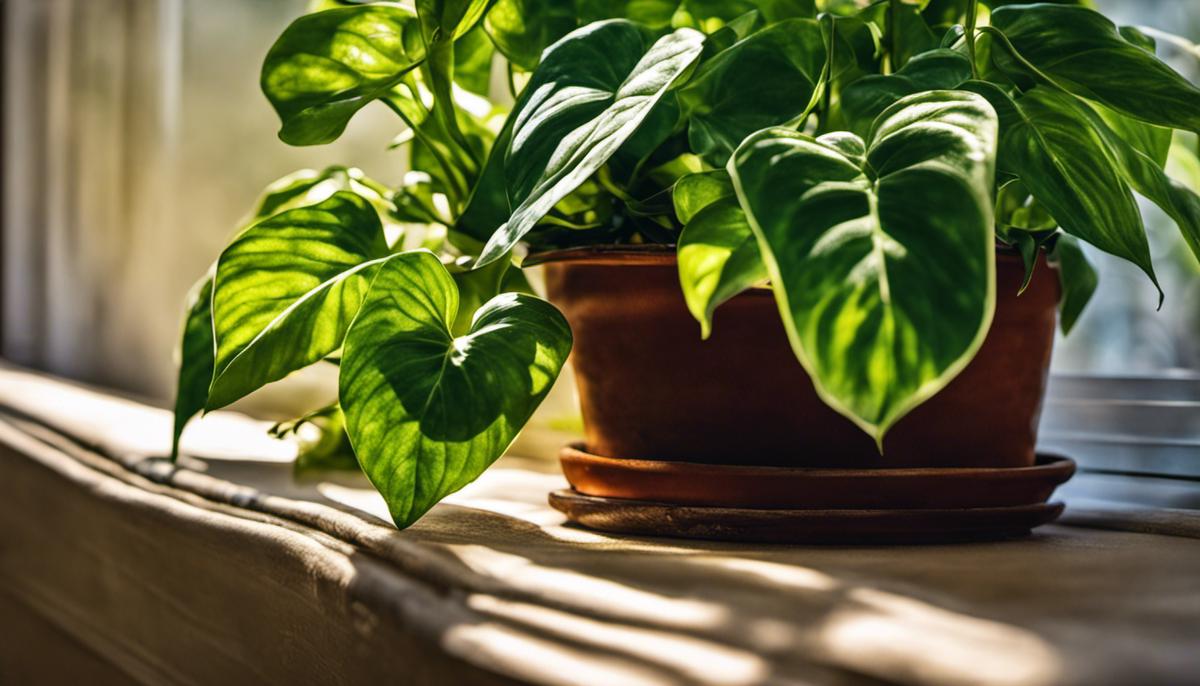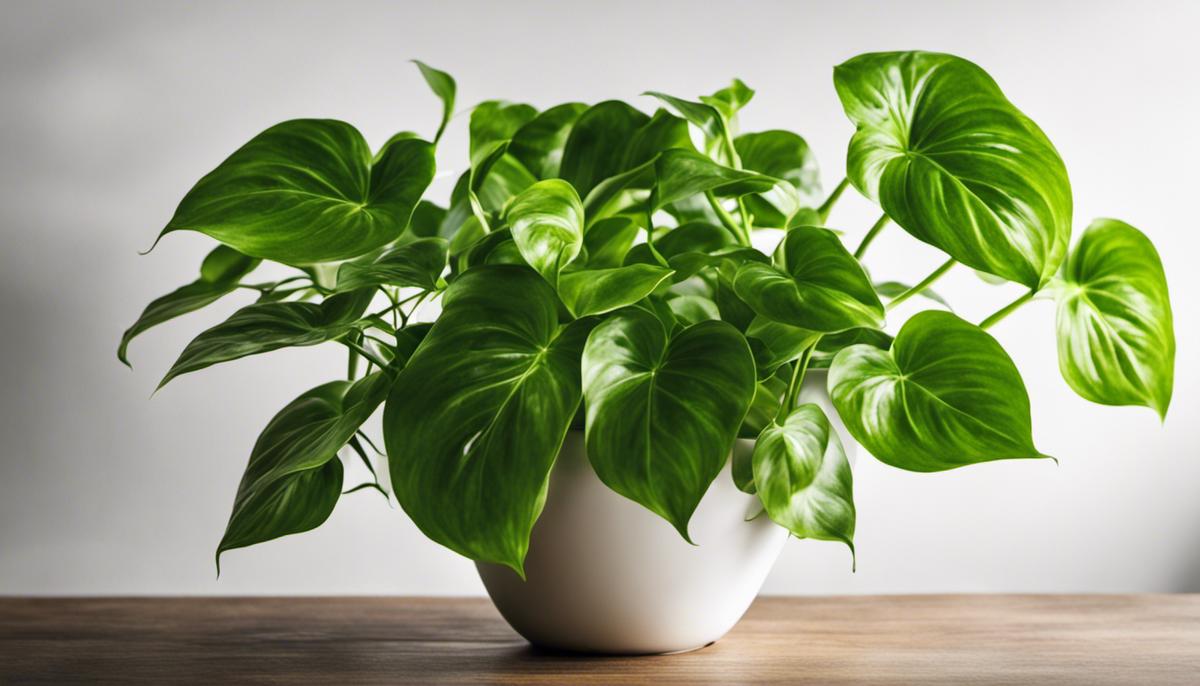
Caring For Pothos Plants
Description: Green, robust and incredibly flexible, Pothos plants are a popular choice among plant enthusiasts for both their aesthetic appeal and their low-maintenance care routine. However, despite their relative ease of care, these plants still require attention and knowledge to ensure they flourish. Understanding the specific watering techniques, lighting requirements, and feeding and repotting processes that these distinctive green plants require is fundamental for their healthy growth. This comprehensive guide aims to equip you with all the essentials about how to provide your Pothos with an environment that allows it to reach its full potential. Whether you're a seasoned green thumb or a rookie just getting your hands dirty, figuring out the right watering schedule for your pothos plant can get to be a bit tricky. However, you're in luck, because right here, right now, there's going to be a deep dive into the art of Pothos hydration. Wait, what's that? Did we just say art? Absolutely, yes! There are so many variables to take into account while watering a pothos plant, and this hobbyist is here to guide fellow plant enthusiasts through it. The two main factors, as many can guess, are quite straightforward: the frequency and the amount of water. Let's get right to it! Pothos plants prefer their soil to dry out completely between waterings. This essentially means that one shouldn't stick to a strict watering schedule. It's not like wake up, coffee, oatmeal, water the pothos, and off to work. No, it requires some keen observation instead. The optimal frequency for watering pothos generally ranges from once every 1-2 weeks. This can fluctuate depending on factors such as temperature, light, and pot type. Always check the dryness of the soil before watering. Touch about one inch deep into the soil. If it feels dry, it’s time to water your pothos. Moving on to the amount of water, another question that frequently plagues pothos carers. While the answer isn't black and white, a good rule of thumb is to water until you notice that water starts to drip from the drainage holes at the bottom of the pot. That’s the magic moment! We're aiming to get the entire root ball wet while also ensuring that the plant isn’t left standing in water. Also, let’s remember the old saying, "Overwatering is a bigger murder mystery than under watering". Oops, that’s not an old saying, is it? Well, it should be! Overwatering is the quickest way to kill a pothos plant. Yellow leaves are typically the first sign of overwatering. If your plant is showing these symptoms, cut back on the watering. And there you have it, the secret to hydrating your Pothos plant beautifully laid out. With these tips in your arsenal, you're on your way to helping your greens hover in horticultural happiness. No complicated tables to follow, just adapt to your plant's lifestyle, observe, and get watering when necessary and you’ll witness your pothos plant thrive in its lush, leafy glory. Happy watering! The journey of nurturing a pothos plant amply rewards the investment of time and effort, especially when you get the light conditions just right. So, what type of light does a pothos plant require? We'll shine some light on this crucial topic for all budding pothos guardians out there! Pothos plants, known for their vibrant coloring and distinct leaf patterns, are incredibly adaptable when it comes to lighting conditions. Their versatility is part of the reason they're such popular houseplants! So, let's get down to it - pothos espouse a solid preference for bright, indirect light. Yes, a spot that has plenty of ambient sunlight but not directly shined upon would be the ideal location. One may ask, don't plants usually love direct sunlight? In general, yes, but not our pothos buddy! Hailing originally from understories of dense jungle foliage, pothos plants have adapted to thrive in lower-light scenarios. Direct sunlight, particularly intense afternoon rays, can potentially scorch their leaves, causing them to turn a yellowish-brown that can be mistaken for signs of under-watering. In contrast, too little light could also hinder this green-friend's growth. Severe light deprivation can result in smaller, less vibrant leaves, and a slower growth rate. But fear not! The remarkable adaptiveness of the pothos plant means it can survive in less than ideal lighting conditions. Although it may not grow as quickly or as brilliantly, your pothos will hold its own in low-light areas as it patiently waits for a brighter future. A common question received is about pothos and artificial light. If you have an office space or area in your home that lacks sufficient natural light, don't despair. Pothos can sustain themselves under fluorescent lighting as well! It's an added testament to their hardy and accommodating nature. In conclusion, while pothos plants are champions of adaptability, their well-being would be best preserved under bright, indirect lighting. If you've got a northern or eastern facing window, that'd be your pothos's best-suited spot. The light requirements of a pothos plant may seem complex initially, but once discovered, it sheds light not only on the plant's needs but also on its fascinating nature. So, whether your pothos is basking in the diffuse glow streaming through a curtain or enduring under fluorescent light in an office, it is sure to stand as a testament to the tenacity and beauty of nature. Nurturing a pothos plant includes not only understanding its water and light needs but ensuring it has adequate nutrients through regular feedings. A pothos plant, like any other living being, needs nourishment to grow and flourish. The prime time for feeding is during the growing season, which is typically from spring through early fall. During this period, fertilization should be monthly to provide the plant with essential nutrients. A balanced houseplant fertilizer, often labeled 20/20/20, represents equal parts nitrogen, phosphorus, and potassium. It's a suitable choice for feeding your pothos plant. Always remember to follow the instructions on the fertilizer package and avoid applying on dry soil to prevent root burn. It's a good practice to water your plant first, then apply the fertilizer to damp soil. Come fall and winter, the plant's growth might slow down - a natural response to the changing season. This is the time to cut back on the feedings, potentially pausing completely until the spring return. Just remember: Plants, exotic as they might be, follow the rhythms of their environment, and your pothos plant is no different. Moving onto repotting, it's another aspect that influences the pothos plant’s health. Repotting should ideally be followed when the roots start to take over the container, known as becoming "root-bound". An excellent method to identify this is when you notice roots growing out of the drainage holes or if the plant dries out faster than usual after watering. Repotting your pothos plant is typically done in early spring. Choose a new pot that's one or two sizes larger than the current one. Fill it partially with a mix of peat moss and perlite or a well-draining potting soil. Then, gently remove the plant from the current pot, carefully detangling any visible roots before placing it into the new container. Fill the remaining space with your chosen soil mix, ensuring the plant is at the same level as it was in the original pot. During the repotting process, make sure to handle your pothos plant softly as their roots can be quite delicate. After you've repotted the plant, water it thoroughly and place it in the usual spot. Avoid exposing the repotted plant to strong sunlight for the first few days. Allow it time to adjust to the new environment, and soon, your pothos plant will grace its surroundings with renewed vigor. To make the journey with your pothos plant even more enriching, remember to maintain a respectful relationship with it. After all, at the heart of every hobbyist's passion is love for the process, the journey, and the joy of seeing their efforts blossom into something beautiful. In the case of nurtured pothos plants, it's abundant, cascading greenery that rewards patience, persistence, and loving care. Keeping these key factors in mind, one can form a comprehensive understanding of how to tend for the Pothos in their own spaces. Mastering the watering regime, analyzing the lighting conditions, and grasping the significance of feeding and repotting will not only bring success in your Pothos growing endeavors but create an enriching relationship with your green companion. May your Pothos thrive and bring the fresh touch of nature into your living spaces, serving as a living testament to your nurturing skills and care. Breeding pothos is the perfect start to learning how to care for houseplants, because they are easy plants and do not need much care, and they are Also beautiful plants and an easy way to add some green plants to the house, and these plants enjoy a wide range of environments, as they can adapt to most places, and prefer bright indirect light, or low lighting, and they can be grown in dry soil or in water vases, and grow in Nutrient-rich soil or in poor soil as well, so it is one of the favorite plants for beginners in the field of agriculture and flower breeding. But please note that the lack of light will make it lose its beautiful green color, so it must be exposed to light indirectly, which is very important for its natural growth, so that it grows quickly and the leaves are beautifully green.Proper Watering Techniques for Pothos
The Secret to Hydrating your Pothos Plant

Pothos Lighting Requirements
Let's switch gears now and illuminate an equally important aspect of pothos care - lighting needs.

Feeding and Repotting Pothos

